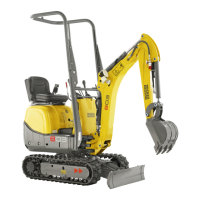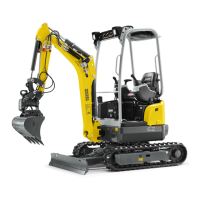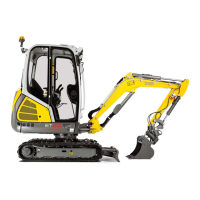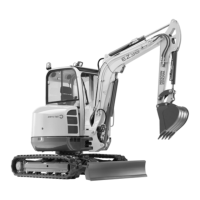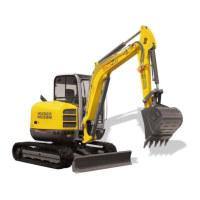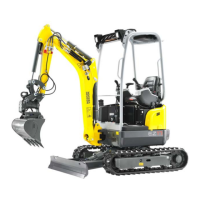OM 28Z3 US – Edition 2.0 * 28Z3b340.fm 3-51
Operation
Rotating the upper carriage
Rotating the upper carriage is described with standard ISO controls.
Important!
• Until the hydraulic fluid reaches operating temperature, the upper carriage
can creep slightly after the control is placed in the neutral position.
• Fast actuation of the control lever rotates the upper carriage fast, slow
actuation of the control lever rotates the upper carriage slowly.
• If the upper carriage needs to be rotated on a slope, let the engine run at
idling speed and actuate the control lever very slowly. Proceed with
extreme care and avoid abrupt movements if the bucket is full.
Rotate the upper carriage to the left as follows:
☞ Push the left-hand side control lever 2 to the left A.
➥ The upper carriage rotates to the left.
Rotate the upper carriage to the right as follows:
☞ Push the left-hand side control lever 2 to the right B.
➥ The upper carriage rotates to the right.
Rotating upper carriage brake
Upper carriage hydraulic brake:
The upper carriage's rotation is sufficiently braked by moving control lever 2 back to neu-
tral position. Moving the control lever in the opposite direction (counteraction) brakes the
upper carriage with maximum hydraulic output.
Upper carriage mechanical brake:
This is a multi-disk mechanical brake that provides a secondary service brake and a pri-
mary parking brake function for the upper carriage. It is operated independently from the
hydraulic brake of the upper carriage.
Important!
The mechanical brake functions only to prevent upper carriage rotation. It does not
function as a machine propulsion brake.
Fig. 66: Rotating the upper carriage to the left
A
2
Fig. 67: Rotating the upper carriage to the right
2
B
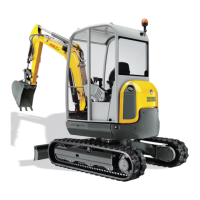
